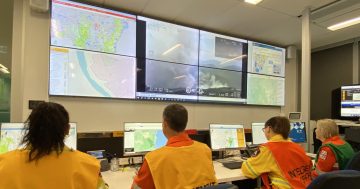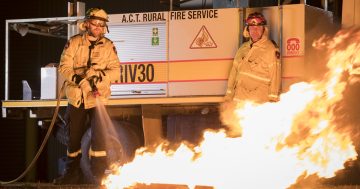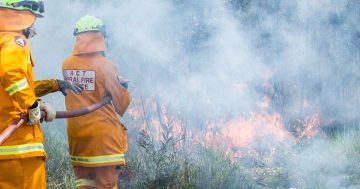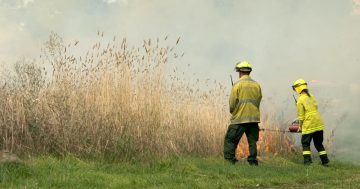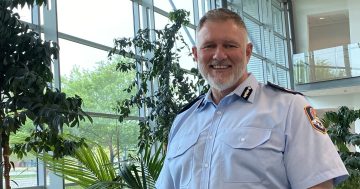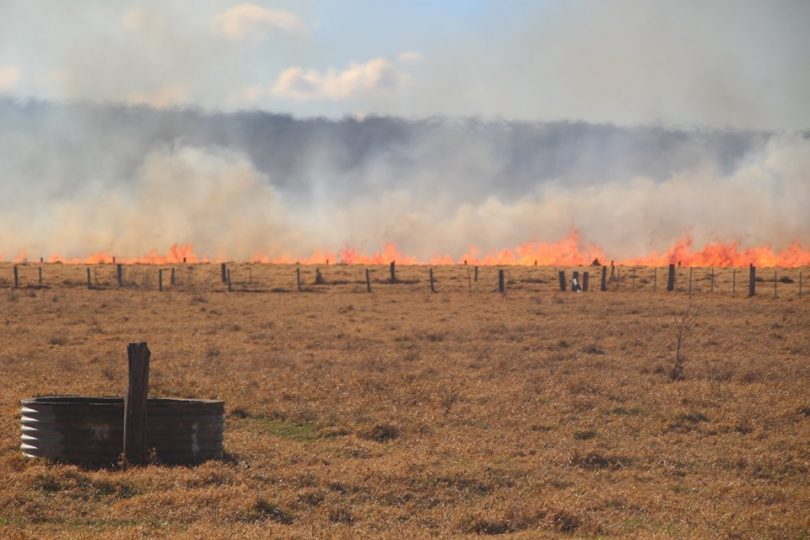
A grassfire near Moruya on 13 July, 2020. Photo: Alex Rea.
People living in the Southern and Central Tablelands of NSW and parts of the ACT should be on high alert for grass and crop fires this summer, experts warn.
The Bushfire & Natural Hazards Cooperative Research Centre’s (BNHCRC) latest bushfire outlook predicts above-normal fire conditions for large parts of NSW, particularly west of the Great Dividing Range, as well as grassland areas in the ACT.
Significant rainfall throughout winter and spring in NSW and the ACT has resulted in prolific grass growth. Authorities are therefore concerned about grass and crop fires this summer as they dry out in the warmer weather.
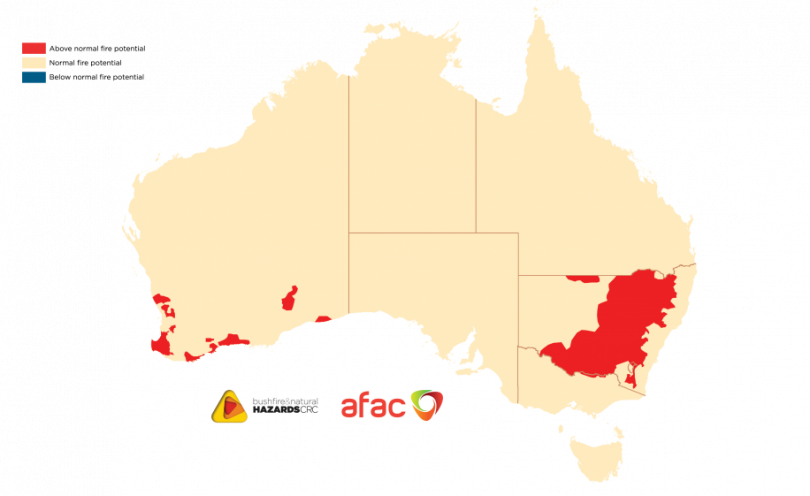
Australian Seasonal Bushfire Outlook: December 2020 to February 2021. Image: Bushfire & Natural Hazards Cooperative Research Centre.
“The grass may be green in the area now, but it won’t take long for it to dry out once the heat of summer starts to appear,” said BNHCRC chief executive officer Dr Richard Thornton.
“Despite the prospect of more rain, a few hot and windy days can make a big difference, particularly in these grassland and cropping areas. When the wind is up and the weather is hot, fires happen across Australia.
“Everyone needs to be prepared: from farmers to holidaymakers and those who live on the urban fringes of towns.”
Many farmers were forced to sell stock during the drought, which means there is more fuel around because there are fewer pastures and crops under grazing.
Meanwhile, forest vegetation and grass in the ACT is currently too damp for authorities to burn.
For the majority of areas, the risk of fires is predicted to be highest from mid-to-late summer and residents are being urged to prepare now.
Dr Thornton said research shows many Australians living in high-risk areas are not ready for a bushfire and don’t have plans in place.
“Grassfires can start quickly, can change direction quickly, can be fanned by strong winds and can be very unpredictable,” he said. “We also know bushfires spread through embers so you don’t have to be on the edge of bushland or grasslands to be at risk.”
The NSW Rural Fire Service is also urging residents to think about their bushfire survival plan and reduce hazards on their property.
“I think after a bit of rain, people become a bit complacent because they think they don’t need to worry and they fall into that trap of thinking they’ll mow the grass, clear the gutter or move objects away from their home at a later date,” said Michael Gapps, NSW RFS operational officer – Southern Tablelands Zone.
“Practice your bushfire survival plan. Discuss it with your family and neighbours so they are aware of what your plan is and can let us know in the event of a fire if you have already left.”
Original Article published by Hannah Sparks on About Regional.












